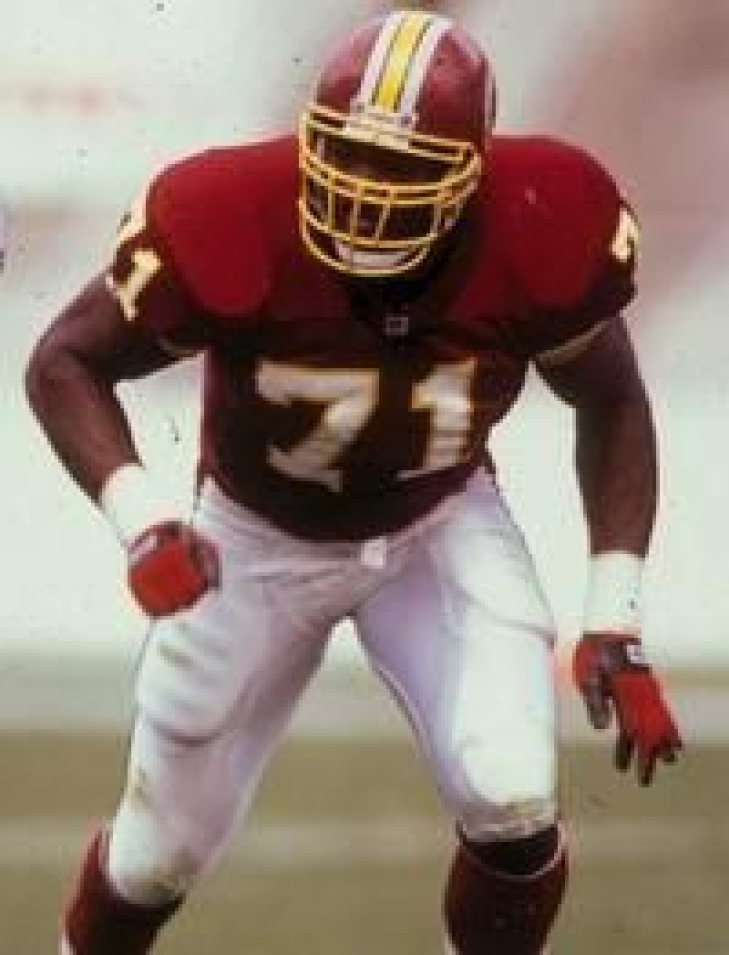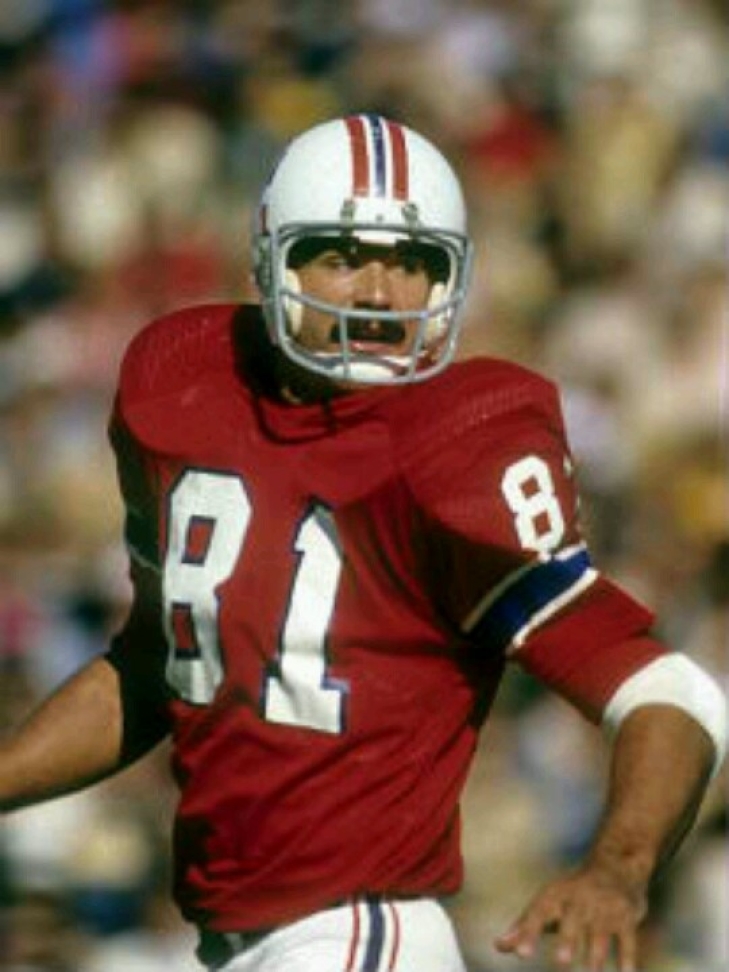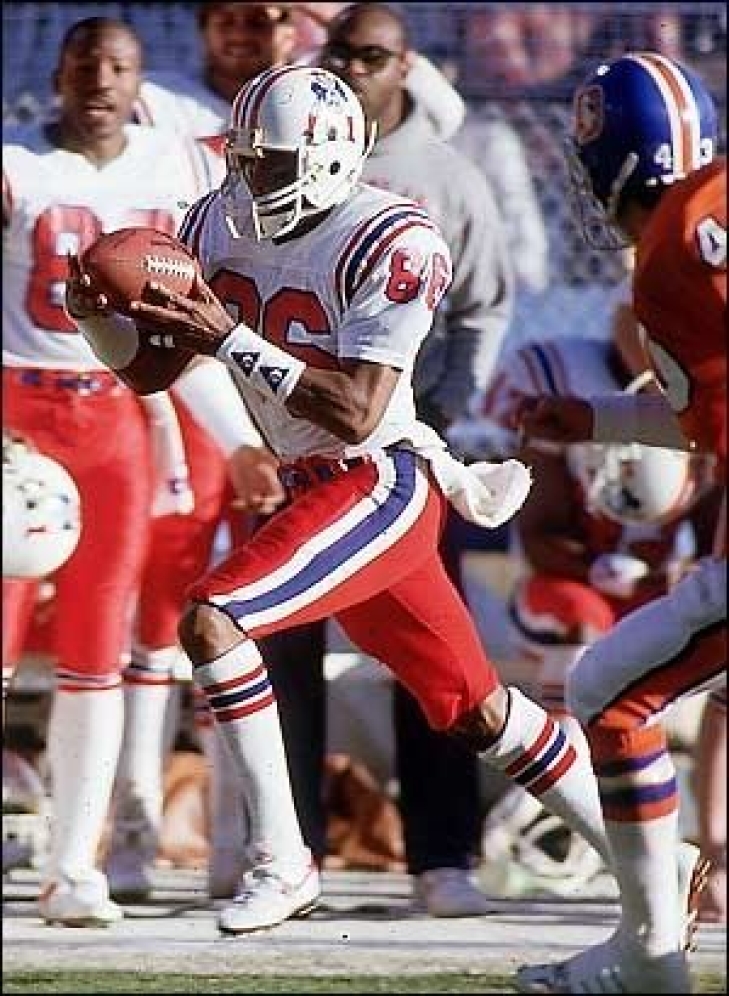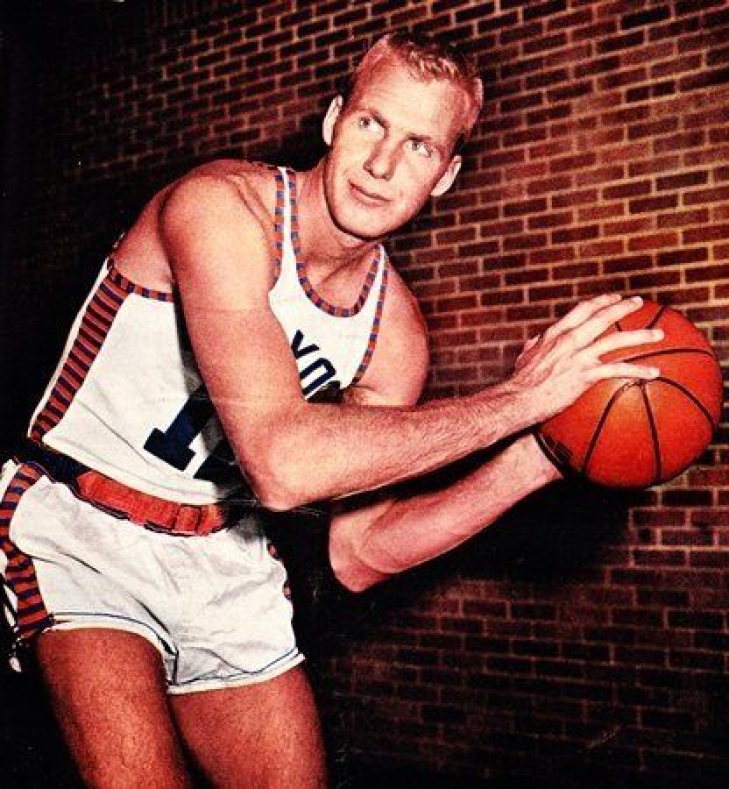
Committee Chairman
288. Charles Mann
From the University of Nevada, Charles Mann became a starter at Defensive End in his second season, where he was a punisher on the pass rush. Playing for the Washington Redskins for his first 11 Seasons (1983-93) had 82 of his 83 career Sacks with Washington, including three four seasons in the double-digits.
Mann went to four Pro Bowls with the Redskins (1987, 1988, 1989 & 1991), and helped them win two Super Bowls (XXII & XXVI). He was especially strong in the 1987 postseason, accruing 4.5 Sacks in the playoffs. Mann was praised for his work ethic and leadership and was one of the most beloved players in Redskins defensive history in and out of the locker room.
Following his release from Washington in 1993, Mann signed with the San Francisco 49ers where he played one final season and helped in a reserve role win his third Super Bowl.
283. Russ Francis
Russ Francis was the first Tight End drafted in 1975. The Oregon product went on to have two distinct careers in the NFL.
Beginning his professional career with the New England Patriots, Francis's blocking ability, matched with his soft receiving hands, led him to three straight Pro Bowls (1976-78) and a Second-Team All-Pro in 1976 and 1978. This was a great time for Francis on the field, though there were some problems off of it.
The Pats were not the juggernaut of the first two decades of the 2000s and were looked at within the NFL as a laughable organization. This was especially true in the 1970s, as New England refused to pay Francis’ bonus for a Pro Bowl (their rationale was that he didn’t play the game due to injury) and he was also upset with the Patriots’ attempt to cancel his roommate, Darryl Stingley’s medical insurance after he was paralyzed by a Jack Tatum hit. Francis retired in 1981, with his heart out of the game. He would return for his second phase in 1982, this time as a San Francisco 49er.
Francis’s second half did not generate a Pro Bowl, but he was a factor in the Niners Super Bowl XIX win over Miami where he had five Receptions. Francis’ blocking opened up holes for Roger Craig, and spaces for Jerry Rice, and protection for Joe Montana. It was a great fit for Francis, whose profile rose, even if his individual accolades did not.
He was released by San Francisco during the 1987 season and returned to the Patriots, where he played one more year.
278. Stanley Morgan
A multi-faceted offensive player at Tennessee, Stanley Morgan was taken by the New England Patriots in the First Round of the 1977 Draft and was a prime offensive threat for the Pats for over a decade.
Originally used more as a returner as a rookie, the “Stanley Steamer” emerged as one of the top deep threats in football by his third season. Quick as lightning, Morgan led the NFL three years in a row in Yards per Reception (1979-81), and was the league-leader in Touchdown Receptions with 12 in 1979. Excellent in short and long routes, Morgan consistently displayed excellent yardage after first being touched. Although he helped the Patriots reach the Super Bowl against the untouchable 1985’ Chicago Bears team, Morgan did not have a lot of great players around him to relieve the load, which hampered his overall touches. Following the Super Bowl loss, Morgan had his third Pro Bowl and fourth Pro Bowl, and remained with the Patriots until 1989. He retired after a final season as an Indianapolis Colt, leaving with 10,716 yards and 72 TDs.
As of this writing, no player with over 500 Receptions has a higher Yards per Reception than Stanley Morgan.
101. Kenny Sears
A two-time WCC Player of the Year from Santa Clara, Kenny Sears was drafted fifth overall in 1955 by the New York Knicks. Sears, who had previously made history as the first basketball player to grace the cover of Sports Illustrated was a two-time All-Star with New York.
Sears was a more than competent Forward and finished eighth in MVP voting in 1957 and 1959. He was also a competent shooter who twice led the NBA in Field Goal Percentage in back-to-back years (1958-59 and 1959-60) and became New York’s top scorer but his career was derailed when his jaw was broken in a fight with George Lee of the Detroit Pistons. He missed several games that year and subsequently broke his contract to play for the San Francisco Saints of the short-lived American Basketball League. Sears returned to the Knick after a year but was not the same player. The Knicks traded him to the San Francisco Warriors where he played two unremarkable years before retiring.





